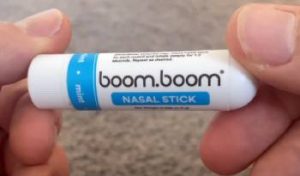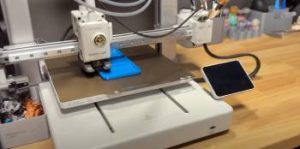Tinnitus, that persistent ringing or buzzing in the ears, is a condition that can be downright unbearable. With so many products on the market claiming to provide relief, I recently decided to try the Luhaka Tinnitus Relief device and share my honest experience. In this review, I’ll break down everything from the features and pros and cons of this device to comparisons with other tinnitus relief solutions. I’ll also dive into tips for getting the most out of products like this and answer common questions about tinnitus treatments. Let’s take an in-depth look to see if Luhaka truly lives up to its promises—or if your money might be better spent elsewhere.
Initial Impressions of Luhaka Tinnitus Relief
When I first heard about Luhaka’s device, I was drawn in by the sleek, compact design and the promise of relief through innovative technology.
The device, which comes in a gold color and weighs just 52 grams, looked like a portable, high-tech solution for a condition that impacts millions.
It has features like head and forehead massage functions and claims to support relaxation and potentially ease tinnitus symptoms. But, after trying it myself and reading others’ reviews, my excitement started to wane.
My Experience With Luhaka
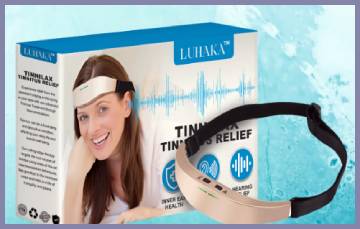
Using the Luhaka Tinnitus Relief device has been a journey of mixed feelings for me.
On one hand, I was excited to try a product that promises relief from tinnitus, an issue I’ve been dealing with for some time. The device itself is lightweight, compact, and easy to handle, which initially gave me a lot of hope.
Its sleek design and simple setup made it feel convenient, especially with a USB charging option that fits seamlessly into my routine.
I appreciated the idea of being able to use it at home, without needing to go to a specialist or commit to a lengthy regimen.
However, after using it a few times, I realized that it didn’t deliver the level of relief I had hoped for. While it does provide a gentle massage and some soothing sensations on my forehead and around my ears, the effects felt quite temporary.
I found myself experiencing mild relaxation, but it didn’t seem to significantly impact the ringing in my ears, at least not in a lasting way.
The short duration of relief left me feeling a bit disappointed, especially since I’d hoped this would be a dependable option to address my tinnitus.
I also noticed some limitations in the product’s adjustability. While it claims to have adjustable sizing, I had a bit of difficulty getting it to sit just right.
I believe fit plays a big role in how effective it feels, so this was a bit frustrating. Another thing that stood out to me was the battery life. The device does hold a charge decently, but needing to charge it often felt inconvenient, especially when the relief didn’t last as long as I’d hoped.
In comparing Luhaka to other similar devices on the market, I found myself leaning toward other options that seem to offer a more lasting effect, or that specifically target tinnitus with different approaches, such as sound therapy.
The Luhaka device might be more effective for someone seeking general relaxation or light massage rather than dedicated tinnitus relief.
Also read: My Thoughts On Lifepro Red Light Therapy
Pros & Cons of Luhaka Tinnitus Relief Device
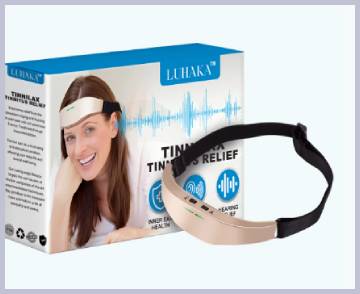
Pros:
Even though I wasn’t completely satisfied, there are some benefits to the Luhaka Tinnitus Relief device worth mentioning:
- Portable and Lightweight: This device is small and easy to carry, which makes it ideal for travel or using on-the-go.
- Simple to Use: Charging the device is straightforward with the included USB cable. Just plug it in, wait about two hours, and it’s ready to go.
- Adjustable Fit: The adjustable size is a thoughtful touch, as it allows you to customize the fit for comfort during use.
- Massage Functionality: The head and forehead massage functions are somewhat relaxing, and they may offer a sense of calm, which can be beneficial for individuals whose tinnitus is linked to stress.
However, as much as I wanted this product to work wonders, my experience and the feedback from others were more mixed.
Cons:
Unfortunately, the Luhaka Tinnitus Relief device has quite a few drawbacks:
- Lack of Effectiveness: The most significant downside is that many users, including myself, didn’t experience any noticeable improvement in tinnitus symptoms. While the massage function was relaxing, it didn’t reduce the ringing or buzzing in my ears.
- Short Battery Life: The device only lasts about 20 uses per charge, with each session set at 15 minutes. For someone looking for long-term relief, this limited battery life might be frustrating.
- Durability Concerns: The ABS material feels a bit flimsy, and I worry about the longevity of the product. Some users have reported issues with durability, and this doesn’t instill confidence in its lifespan.
- High Price for Limited Results: For the cost, the benefits don’t seem to align with the price point, making it feel like a bit of a gamble.
Also Read: My Experience With No More Colds Red Light Therapy
Tips for Luhaka Tinnitus Relief Device
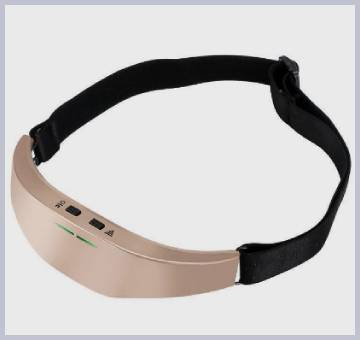
If you do decide to try the Luhaka device, here are some maintenance tips that can help you make the most out of it:
- Regular Charging: Charge the device regularly to maintain battery health. Avoid letting the battery drain completely, as this can reduce its overall capacity over time. Charge it after every few uses. With a charging time of 1-2 hours, this will keep it ready whenever you need it.
- Clean After Each Use: Clean the device after each session to remove any oil, sweat, or residue that may accumulate from skin contact. Use a soft, slightly damp cloth to wipe the device, especially on areas that make contact with the skin. Avoid using harsh chemicals or soaking the device in water, as this may damage the electronic components.
- Proper Storage: Store the device in a cool, dry place away from extreme heat or moisture to prevent damage to the battery and materials. Keep it in a protective pouch or case (if available) to avoid scratches and damage when not in use, especially if you’re carrying it around in a bag or suitcase.
- Avoid Overuse: Stick to the recommended usage guidelines. Overuse could stress the device and might not enhance the benefits. The manufacturer recommends sessions of 15 minutes at a time. Using it too frequently without breaks may lead to faster wear and tear on both the battery and massaging components.
- Check for Software or Product Updates: If the device comes with any software or app for updates, check for firmware updates that may improve performance or add functionality. Firmware updates can optimize the device’s operation or fix bugs, especially if it’s a newer model.
- Inspect for Wear and Tear: Periodically check the device for signs of wear, particularly in the charging port and the massage heads.Identifying wear early on can help you address issues before they worsen, ensuring the device remains functional longer.
Luhaka Vs. Other Tinnitus Relief Products
After trying Luhaka, I decided to look into other options and see how it holds up against other popular tinnitus relief products on the market. Here’s how it stacks up against a couple of well-known alternatives.
- Luhaka Vs. Sound Therapy Devices
Sound therapy devices are another common option for tinnitus relief, offering white noise or natural sounds to mask the ringing. These have a proven track record, particularly for individuals whose tinnitus is more severe at night. Compared to the Luhaka device, sound therapy devices often deliver a more noticeable and immediate reduction in perceived tinnitus symptoms. They’re also generally more durable and customizable.
- Luhaka Vs. Supplemental Solutions
There are also several dietary supplements marketed for tinnitus relief that contain ingredients like Ginkgo Biloba, zinc, and magnesium. While there’s no definitive cure for tinnitus, some users have found relief through supplements. The downside is that supplements can take time to show results and may not work for everyone, but they are generally more affordable than Luhaka.
- Luhaka Vs. Alternative Wearable Devices
Some brands offer wearable devices specifically designed for tinnitus relief, which use sound and vibrations to target the auditory nerves. These devices often come at a higher price point but may provide more targeted relief. Compared to Luhaka, these wearables are typically built with tinnitus specifically in mind and might yield better results for users seeking direct symptom management.
Also Read: My Thoughts On Viconor Red Light Therapy
Frequently Asked Questions (FAQ)
There’s no universal “trick” to stop tinnitus completely. However, many find relief through sound therapy, relaxation techniques, and, in some cases, using products designed to mask or reduce tinnitus sounds.
The most successful treatments vary by individual but can include sound therapy, hearing aids, or cognitive behavioral therapy. Consulting with a healthcare provider is often the best way to determine a personalized treatment plan.
Traditional Chinese Medicine (TCM) approaches tinnitus by addressing the underlying causes, such as kidney deficiencies or energy imbalances. Herbal remedies, acupuncture, and acupressure are common TCM methods used to manage tinnitus.
Supplements like Ginkgo Biloba, magnesium, and zinc are often recommended for tinnitus relief, though their effectiveness can vary from person to person. Always consult a healthcare provider before starting a new supplement.
Final Thoughts
After using the Luhaka Tinnitus Relief device, I have to say I’m somewhat disappointed. While it’s a lightweight, portable option with a few relaxing features, I didn’t find it to be effective in truly addressing the symptoms of tinnitus. Compared to other solutions like sound therapy devices or supplements, Luhaka fell short of expectations, especially given its price point and the mixed reviews from other users.
If you’re exploring options for tinnitus relief, I’d recommend considering alternatives that have a stronger track record for symptom management. Sometimes, the best path to relief involves consulting with a healthcare provider to explore the many available treatment options.

